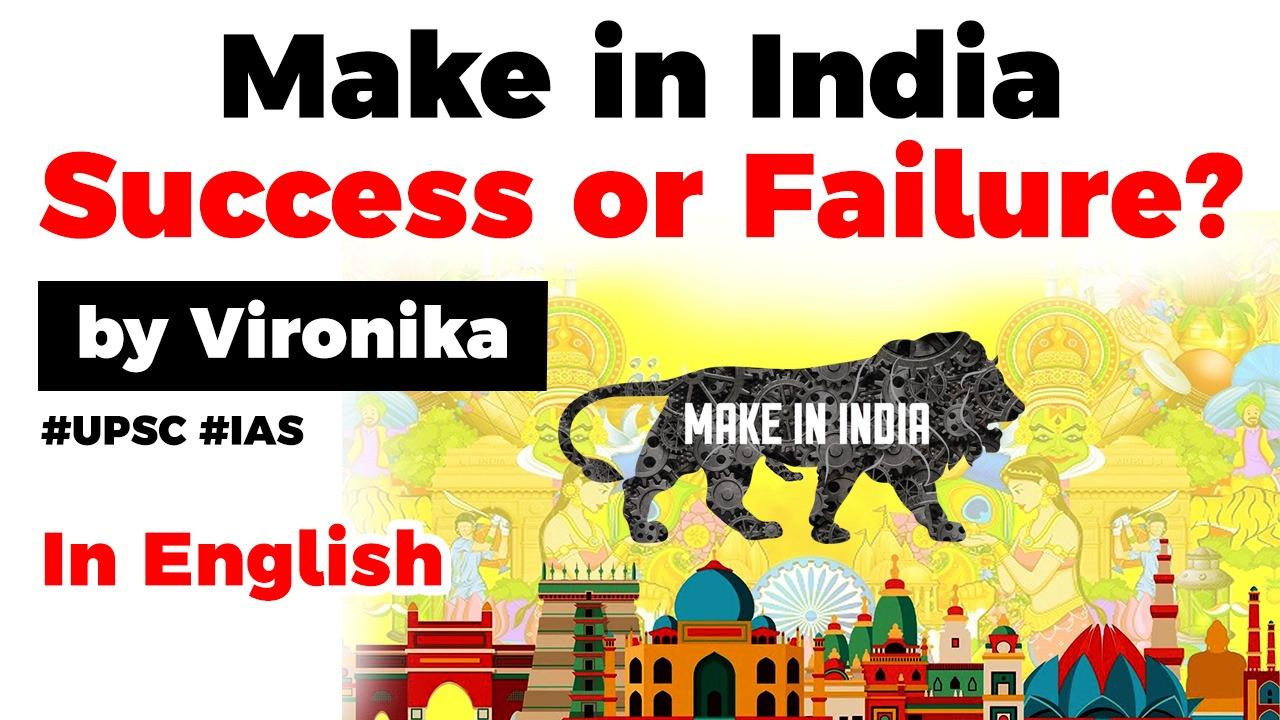Table of Contents
- ‘Five years after its launch its appropriate time to take the stock of the progress made by ‘Make in India’.
- The initiative basically promises the investors – both domestic and overseas – a conducive environment to turn 125 crore population strong-India a manufacturing hub and something that will also create job opportunities.
Achievable Targets
- Target of an increase in manufacturing sector growth to 12-14% per annum over the medium term.
- An increase in the share of manufacturing in the country’s Gross Domestic Product from 16% to 25% by 2022.
- To create 100 million additional jobs by 2022 in manufacturing sector.
- Creation of appropriate skill sets among rural migrants and the urban poor for inclusive growth.
- An increase in domestic value addition and technological depth in manufacturing.
- Enhancing the global competitiveness of the Indian manufacturing sector.
- Ensuring sustainability of growth, particularly with regard to environment.
Three major objectives
- First- Manufacturing growth rate at 12-14 %
- Second-100 million jobs
- Third-increase manufacturing’s contribution to GDP to 25%
Assessment
- Progress on the investment front: Slow growth The decline in gross fixed capital formation Increase in private sector’s savings decrease in investment
- Progress on the output growth front:
- Double-digit growth only in two quarters
- Below 3% for the most part
- Progress on the employment growth front
Problems with the policy
- First- Too much reliance on foreign capital: The bulk of these schemes relied too much on foreign capital for investments and global markets for produce.
- Second-Lack of implementation: The policy implementers need to take into account the implications of implementation deficit in their decisions.
- Too-much ambitious goals
- Beyond capacity rate for the sector
- Overestimation of implementation capacity
- Dealing with too many sectors
- Lack of policy focus
- Lack of understanding of comparative advantages
Outcomes
- Foreign direct investment (FDI) has increased from $16 billion in 2013-14 to $36 billion in 2015-16 • FDIs in the service sector is $23.5 billion
- India’s share in the global exports of manufactured products remains around 2% which is far less than 18% share of China.
- ‘Make in India’ initiative led to radiant growth in the IT and manufacturing sectors.
- The implementation of Goods and Services Tax (GST) have made the industry as a whole much more transparent and accountable.
- Many companies have set up several manufacturing units throughout the country that produce electrical equipment and products such as bulbs, tube lights, wires and cables and others.
- First indigenously developed and manufactured Rotavirus vaccine, ‘Rotavac’, launched. 30 bioincubators and Biotech Parks supported.
Issues
- Investment from Shell Companies
- Low Productivity
- Small Industrial Units
- Complicated Labour Laws
- Infrastructure
- Transportation
- Red Tapism
- Insufficient Rules and Regulations
Steps Taken
- Government has taken steps to revise the FDI norms to make India more attractive for FDI.
- For export-oriented growth and to compete with Southeast Asian countries, especially in attracting FDIs, the reduction of the corporate tax .
- Indian government has to take more initiatives to create a conducive environment for the growth of industries and especially manufacturing systems. A targeted approach towards specific goal can be used to address the issue.
Latest Burning Issues | Free PDF






















 WhatsApp
WhatsApp